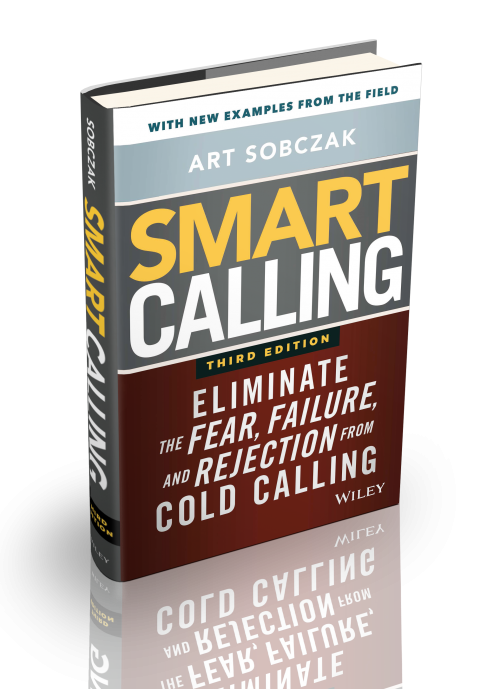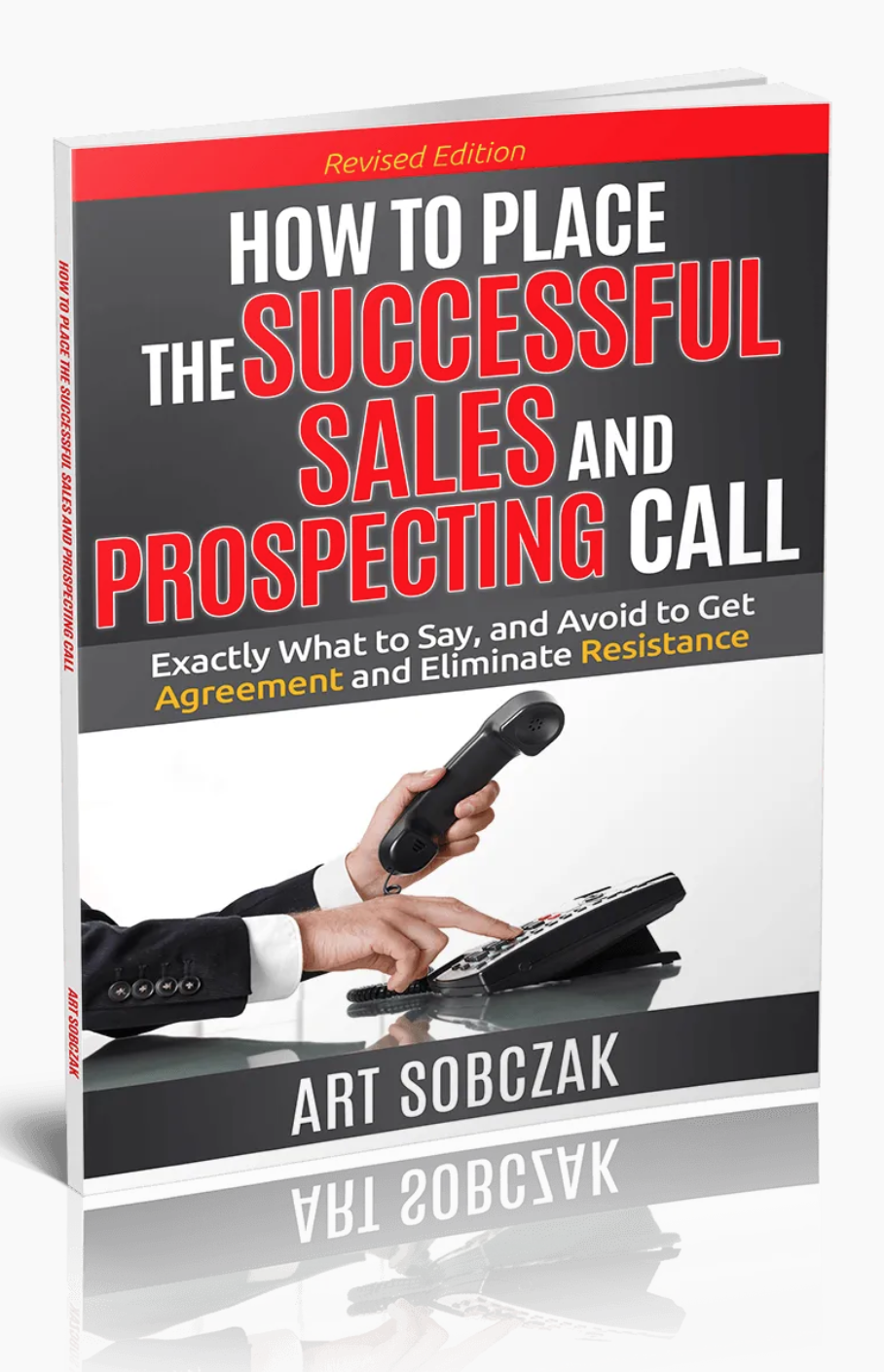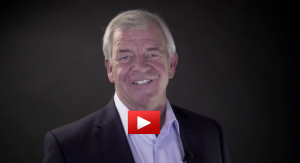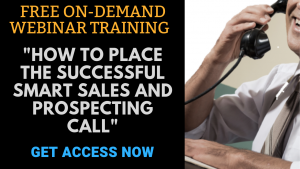What to Say When Calling Existing Customers to Add Value During This Challenging Time
(Transcript of the training video)
In my podcast and video last week I shared 13 tips on how to sell and service in a Coronovirus-infected business environment. The response to that was incredible. Thanks to all of you who gave me feedback, and more importantly I am delighted that so many shared it with others, their team, and many also based entire training meetings on it.
I’ve had a ton of requests to take some of these areas and go deeper, so I’m going to do that today.
And then at the end, I’ll tell you what I’m going to do for sales pros and teams who really are serious about their sales performance, and their personal development during this challenging time.
Just a bit of a teaser… I’m going to put together a combination of my most comprehensive, virtual training course, complemented by five live webinars dealing specifically with today’s environment, and offering it for next to nothing. I’m not making it completely free because I want people to have skin in the game. But at the same time I want to be of massive service to as many people as I can in the sales profession, without any barrier, so that we can do our part to get this economy moving again.
Ok, today we are going to talk about what to say when calling existing customers, so that we are perceived as a valued, trusted advisor. And so that we protect the business we already have, set the stage for future business, and maybe even sell something today.
So, why call existing customers? Well, it’s a lot easier and cheaper to keep business than to go find new business. We want to protect what we already have. Guess who your biggest competitors are calling right now? That’s right, your best customers.
We want to call them for a few reasons.
To begin, you’ll want to call your best customers first… the top 10 percent and then work down the list. First and foremost you want to let those customers know you are there for them. And, if you are not able to deliver at 100 percent, we want to keep them informed.
We also want to call with some possible value, and new opportunities for them, if appropriate.
Before doing any calling I suggest sitting down and brainstorming,
What new problems are our prospects and customers facing right now, that they might not have had last week, and how are we uniquely qualified to help them?
Really give this some thought. Most personal lives have been turned upside down in the past two weeks, the same is true with most businesses in many ways.
What other possible form of value might we be able to share?
This would be anything that would prevent you from doing the lazy and worthless “Just checking in” call.
When I do in-company training for sales teams that call their customers and accounts on a regular basis, we do an exercise where we brainstorm for the possible items of interest or possible value they could share. Every time we come up with 15-50 great reasons for calling.
It could be some best practices that your other customers are implementing that they could use too…, maybe it would be a different way of utilizing what they already have purchased from you. It could and should be an update on what your company is doing as it relates directly to them. For example, supply and availability information. Safety measures, if that applies. You are only limited by your imagination here.
Think of what unique challenges and problems they are now encountering, and how you might be able to help them.
Ok, let’s get into the messaging on the call itself. I’ll give some general tips, and then we’ll plug them into actual call openings.
Address the present situation. I suggest the first sentence be something that addresses the present situation, your appreciation and concern for them and your purpose for the call. Of course the specifics here will depend on what you sell, what you both are experiencing, and your relationship with them.
I’ll give you a couple of examples of this, but first, we’ll want to add something else. Your intro should seamlessly integrate with my next suggestion which is to …
Get Personal. Since these are your customers, you will probably have different degrees of familiarity and rapport with them. With the ones who are like family and friends, you will have no problem here and it will develop naturally. But with every other one, I suggest leading with a personal question first. Everyone is affected by this personally in many ways. And everyone likes talking about their most favorite subject, themselves. So ask them,
“First, let’s talk about what’s most important here… how are you and your family with all of this?”
Or,
“This has really affected everyone in a lot of ways… how has it changed your life?”
And also, a key in good conversation is sharing of yourself. Let them know what’s going on with you.
Personally, I go to the grocery store almost every day. I cook, I don’t plan far in advance, and I enjoy the store experience. Obviously that has changed in the past couple of weeks. What I’ve been saying the past few days is, “It’s amazing all the people I see in the grocery store I’ve never seen before. What, didn’t these people ever shop? And, I think they should have a special time for us regulars so we can have the store to ourselves, like we used to!”
Ok, so combining these two into an opening could sound something like the following…
With a more familiar customer it could be,
“Hi Diane, it’s Art at Quality Services. We haven’t talked since all of this really heated up… first, how are you doing with everything?”
With someone you’re not quite as intimate with,
“Hi Pat, Art Sobczak here, your account manager at Quality Services…I wanted to let you know, that we know it’s a challenging time for our customers in the (their industry) business. And we are here to share our support and a few ideas that others have found useful. But first, and most importantly, how are you?
How are you being affected by all of this?”
And, by the way, notice I’m not using the C word. Coronavirus. Just open up a news site and you’ll see it more than you probably want. Why use it? We can’t treat the virus, we only can react and act based on the environment, and what we can control. So let’s keep it positive.
Next, mention the possible value you had prepared in advance.
“I wanted to let you know about something that a few of our other dealers are doing to bring in some additional revenue that they didn’t have previously.”
“I have a tip regarding the software that is helping a lot of our other users, given that their staff is mostly remote.”
Next, a question I’ve been getting a lot is,
“Should this be a sales call?” Well, technically, every communication is a sales call because there is no difference between selling and helping. But, let’s get more specific with what I believe most people mean by a sales call, as in, should you be offering something.
And my answer to that is, I don’t know. Maybe yes, maybe no.
How will you know?
Go where the road takes you.
If the music is still playing, stay on the dance floor.
If in your conversation, it leads to a need or problem that you are able to address right now, go down that path.
If you most certainly have value that you can deliver right now, something that you have a pretty good idea that the customer is looking for based on the present environment, most definitely yes.
Yes, but with this caveat: Like any great sales conversation, you don’t go in and just vomit out a pitch. Always take the results of what you can deliver, and work backwards to create questions to first ensure that they would be interested.
For example, let’s say you are a staffing service. You have put together a pool of qualified workers who are now suddenly looking for replacement income. Your company has done the prescreening, and they can start quickly. So one of your clients is a grocery store chain. They are struggling to hire good people to keep up with the crazy demand we are all seeing, and have a big desire to not have to wade through lots of unqualified applicants, and get people onboarded quickly.
So, instead of calling up and pitching something like, “Hey, we can provide you with qualified workers right now,” you would pique their interest with a great opening–which I’ll share in a bit–then move into a few questions based on the results you deliver. For example,
“I see you are advertising for a number of positions in your various stores. What are you experiencing?”
Then, you would drill deeper based on the answers.
If they said they just can’t keep up with the demand to fill their newly-opened positions, you’d ask them to tell you more about that, and why.
More specifically, because your workers come pre-screened and qualified, you’d ask how much time it is taking to sort through all of the applications. And, what they have experienced when they hire someone who doesn’t work out.
See where I’m going with this?
After these questions, you now have their answers, which you can use word-for-word when you are explaining the service you offer.
It’s a beautiful thing.
Ok, I promised the opening intro when you are calling a customer where you have a pretty good idea you could help them now. So to adapt what I’ve covered so far, it would sound like,
“Hi Pat, Art Sobczak here at Quality Staffing. I know that you are most likely putting in long hours and facing some challenges you didn’t have a few weeks ago. I’ve got something I think you’ll be interested in… but first, more importantly, how are you doing? The main reason I’m calling is that we know that grocery stores are struggling to hire good people to keep up with the crazy demand we are all seeing, and have a need to not have to wade through lots of unqualified applicants, and to get people onboarded quickly. Depending on what you are experiencing, we might have an option for you to get prescreened, motivated people, who are looking for jobs, hired, onboarded, and producing quickly.”
Finally, leave them with a good feeling. Not to get all woo-woo here, but it is a fact that people will remember you based on how you make them feel.
Again, thank them for their business. Let them know you are here for them. A training client of mine is now giving out his personal cell number and saying he is available 24/7 for them. Tell them that when things are ready to heat up again that you want to help them get back to full speed before anyone else.
And then, after your calls, back them up with multi-media communication. A follow up email. A text if you have their mobile. A handwritten note. Maybe even a little gift that you send.Bottom line, it is a lot easier and profitable to keep the customers you have than to get new ones. And now, more than ever it is important that we are in a proactive mode to do so. It will pay off for you in the long term, and might result in short term sales as well.Ok, I’ve decided that I want to do my part to help as many salespeople as I can, as quickly as I can, so they can help more people, and we can get this economy moving again.
I’m putting together some very special and timely training, for both inside salespeople who were in that role before–including Business Development Reps– and any other salesperson who must now do most of their communicating from inside an office or their home.
I’m combining my most comprehensive, high end virtual training program, the Smart Calling College, which is over 10 hours of video, chunked up into lots of shorter videos and modules, complemented with five, live training webinars over a four-week period.
Thousands of sales pros and entire teams worldwide have gone through the Smart Calling College and still use it as the standard for their training. This program takes you step by step through the creation of the messaging for each part of your successful prospecting and sales call, which is applicable for mostly all b2b industries and sales cycles. Over a five week period I will also hold five, 45-minute live webinar sessions to complement the material covered to that point, and provide new training, covering specifically how to handle calling and selling during this challenging environment.
As I mentioned, I want to impact as many people as I can, and I want to remove any barrier from someone getting involved. Now, this is over $1200 worth of training… we sell the Smart Calling College itself for $895, and when I do individual public training webinars they start at $79. I thought about just making this all free, but I also know when something is free we attract a lot of people who don’t do anything. And I don’t want those people involved in this. So, there’s an old saying that people who pay, pay attention. I’m going to ask that participants have some skin in the game. But, it is going to be ridiculously low. Actually less than what I would charge for a single 45 minute webinar.
Here is what to do right now. We are going to open enrollment in the program on Monday, March 30 at 9:00am Eastern time. Participants will get instant access as soon as they enroll. The first introductory webinar will be Wednesday, April 1st, no fooling at 3pm Eastern. The next webinars will be the four following Mondays at 3 Eastern.
To get on the list to receive the full details when we open up enrollment on Monday, go to Calling.Training.
Thanks for joining me, I’ll talk to you soon. I’m Art Sobczak.












